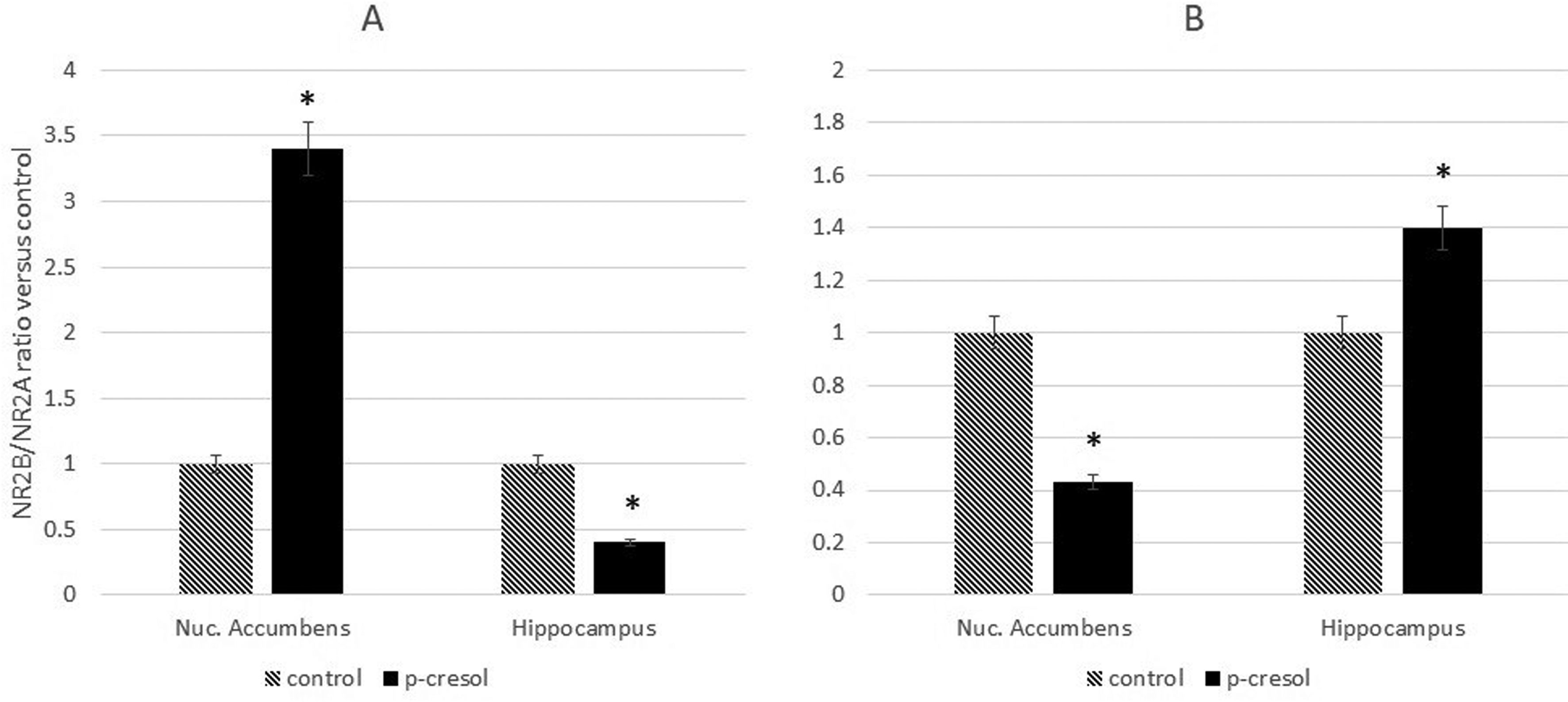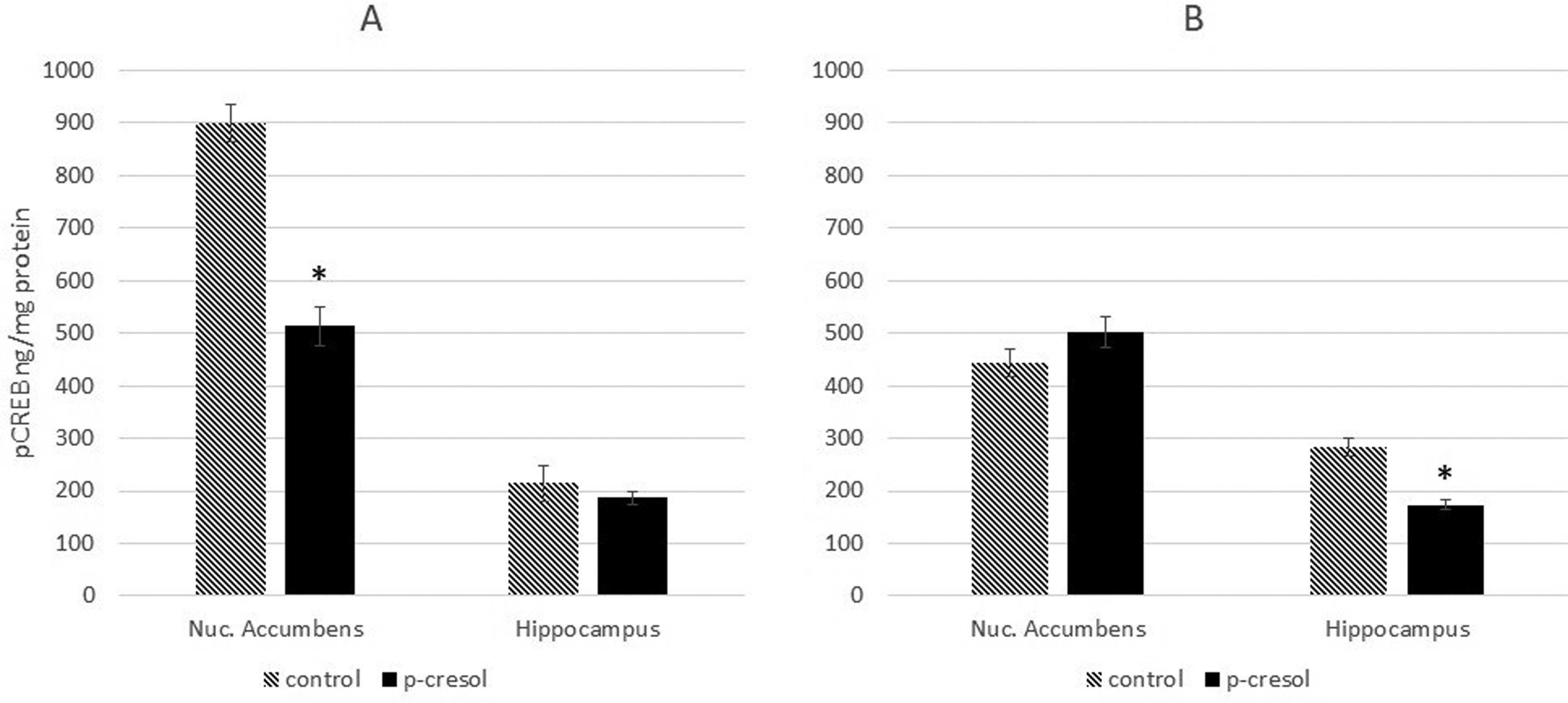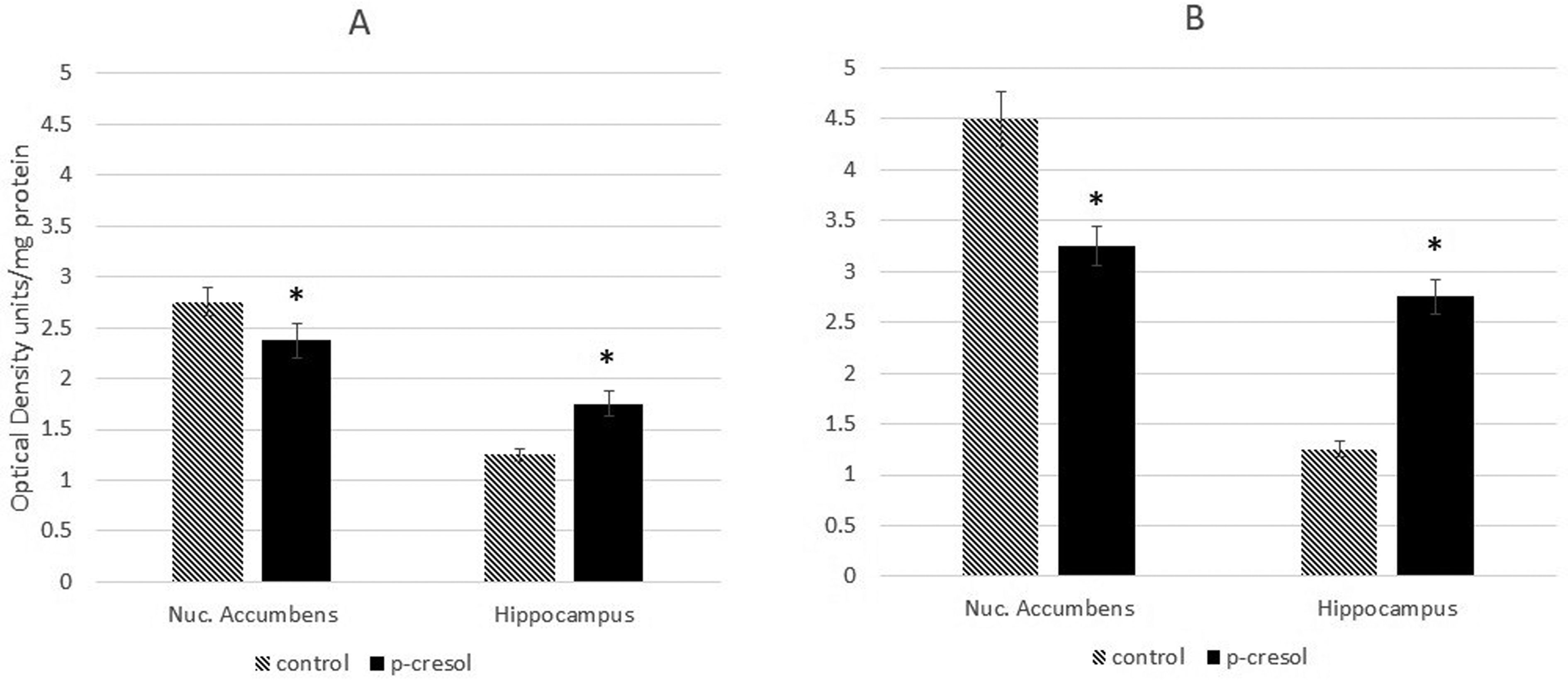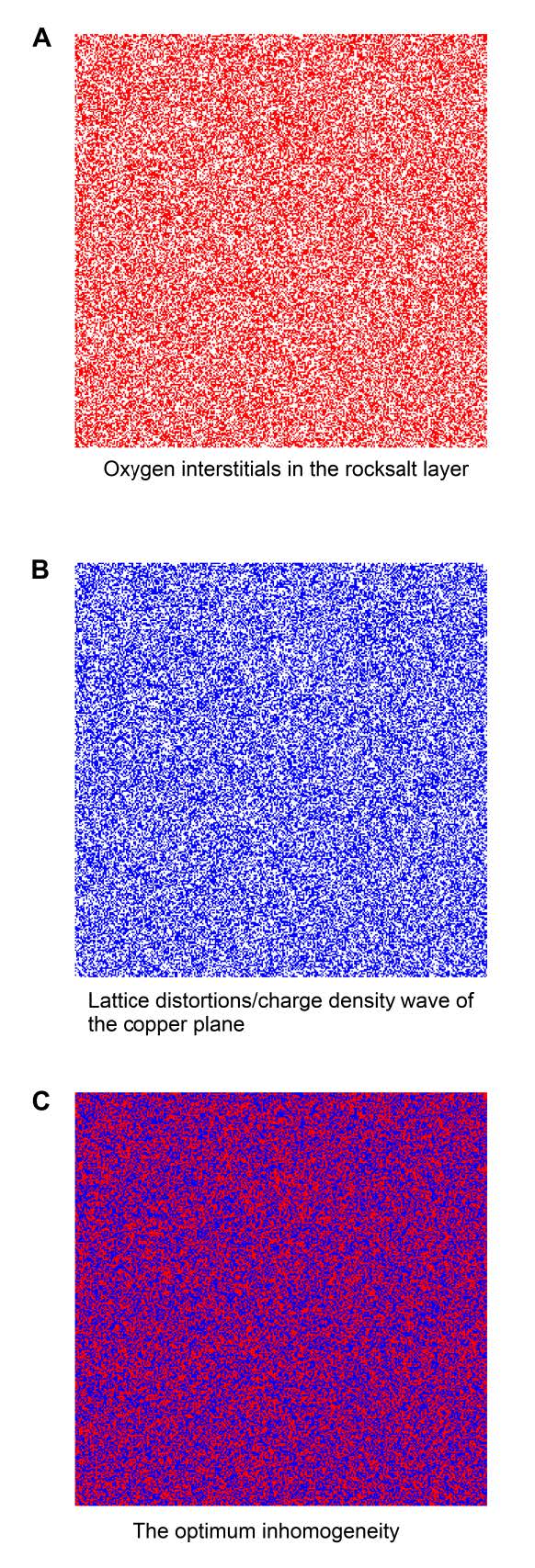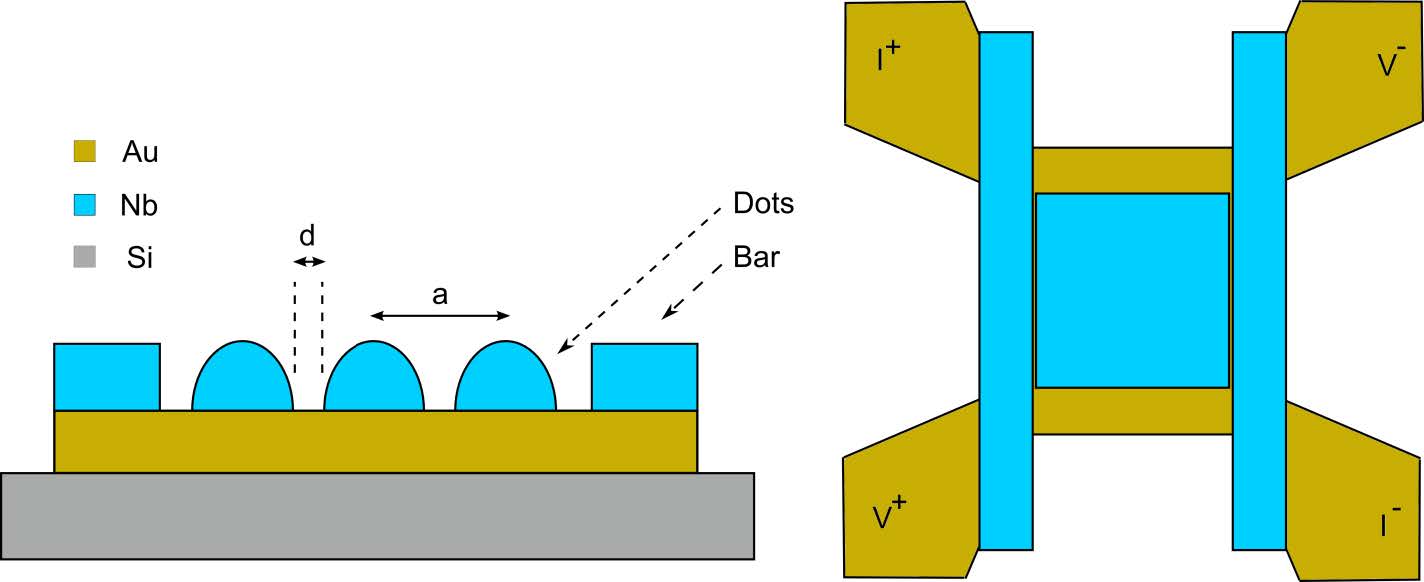|
[1]
|
Ice GE, Budai JD, Pang JWL (2011) The race to x-ray microbeam and nanobeam science. Science 334: 1234. doi: 10.1126/science.1202366

|
|
[2]
|
Crabtree GW, Sarrao JL (2012) Opportunities for mesoscale science. MRS Bulletin 37: 1079.
|
|
[3]
|
Xia F, Jiang L (2008) Bio-Inspired, Smart, Multiscale Interfacial Materials. Adv Mater 20: 2842. doi: 10.1002/adma.200800836

|
|
[4]
|
Yip S, Short MP (2013) Multiscale materials modelling at the mesoscale. Nat Mater 12: 774.
|
|
[5]
|
Nilges T (2012) Materials science: The matryoshka effect. Nature 489: 375. doi: 10.1038/489375a

|
|
[6]
|
Magasinski A, Dixon P, Hertzberg B, et al. (2010) High-performance lithium-ion anodes using a hierarchical bottom-up approach. Nat Mater 9: 353. doi: 10.1038/nmat2725

|
|
[7]
|
Biswas K, He J, Blum ID, et al. (2012) High-performance bulk thermoelectrics with all-scale hierarchical architectures. Nature 489: 414. doi: 10.1038/nature11439

|
|
[8]
|
Susini J, Barrett R, Chavanne J, et al. (2014) New challenges in beamline instrumentation for the ESRF Upgrade Programme Phase II. J Synchrotron Radiation 21: 986. doi: 10.1107/S1600577514015951

|
|
[9]
|
Kalinin SV, Spaldin NA (2013) Functional Ion Defects in Transition Metal Oxides. Science 341: 858. doi: 10.1126/science.1243098

|
|
[10]
|
Zaanen J (2010) High-temperature superconductivity: The benefit of fractal dirt. Nature 466: 825. doi: 10.1038/466825a

|
|
[11]
|
Littlewood P (2011) Superconductivity: An x-ray oxygen regulator. Nat Mater 10: 726. doi: 10.1038/nmat3128

|
|
[12]
|
Nelson DR (2002) Defects and geometry in condensed matter physics, Cambridge University Press, and reference therein.
|
|
[13]
|
Müller KA. in Superconductivity in Complex Systems, edited by Müller and A. Bussmann-Holder, Springer Berlin Heidelberg, 2005.
|
|
[14]
|
Fischer Ã, Kugler M, Maggio-Aprile I, et al. (2007) Scanning tunneling spectroscopy of high-temperature superconductors. Rev Modern Phys 79: 353. doi: 10.1103/RevModPhys.79.353

|
|
[15]
|
Fratini M, Poccia N, Ricci A, et al. (2010) Scale-free structural organization of oxygen interstitials in La2CuO4+y. Nature 466: 841. doi: 10.1038/nature09260

|
|
[16]
|
Poccia N, Ricci A, Campi G, et al. (2012) Optimum inhomogeneity of local lattice distortions in La2CuO4+y. P Natl Acad Sci 109: 15685. doi: 10.1073/pnas.1208492109

|
|
[17]
|
Poccia N, Ricci A, Bianconi A (2011) Fractal structure favoring superconductivity at high temperatures in a stack of membranes near a strain quantum critical point. J Supercond Novel Magnetism 24: 1195. doi: 10.1007/s10948-010-1109-x

|
|
[18]
|
Ricci A, Poccia N, Campi G, et al. (2011) Nanoscale phase separation in the iron chalcogenide superconductor K0.8 Fe1.6Se2 as seen via scanning nanofocused x-ray diffraction. Phys Rev B 84: 060511.
|
|
[19]
|
Ricci A, Poccia N, Campi G, et al. (2013) Multiscale distribution of oxygen puddles in 1/8 doped YBa2Cu3O6.67 Sci Rep 3.
|
|
[20]
|
Campi G, Ricci A, Poccia N, et al. (2013) Scanning micro-x-ray diffraction unveils the distribution of oxygen chain nanoscale puddles in YBa2Cu3O6.33. Phys Rev B 87: 014517. doi: 10.1103/PhysRevB.87.014517

|
|
[21]
|
Poccia N, Chorro M, Ricci A, et al. (2014) Percolative superconductivity in La2CuO4.06 by lattice granularity patterns with scanning micro x-ray absorption near edge structure. Appl Phys Lett 104: 221903.
|
|
[22]
|
Ricci A, Poccia N, Campi G, et al. (2014) Networks of superconducting nano-puddles in 1/8 doped YBa2Cu3O6.5+ y controlled by thermal manipulation. New J Phys 16: 053030.
|
|
[23]
|
Poccia N, Ricci A, Campi G, et al. (2013) Competing striped structures in La2CuO4+y. J Supercond Novel Magnetism 26: 2703. doi: 10.1007/s10948-013-2164-x

|
|
[24]
|
Campi G, Ricci A, Poccia N, et al. (2014) Imaging Spatial Ordering of the Oxygen Chains in YBa2Cu3O6+y at the Insulator-to-Metal Transition. J Supercond Novel Magnetism 27: 987. doi: 10.1007/s10948-013-2434-7

|
|
[25]
|
Ricci A, Poccia N, Joseph B, et al. (2015) Direct observation of nanoscale interface phase in the superconducting chalcogenide KxFe2−ySe2 with intrinsic phase separation. Phys Rev B 91.
|
|
[26]
|
Ricci A, Joseph B, Poccia N, et al. (2014) Temperature Dependence of\ sqrt {2}\ times\ sqrt {2} Phase in Superconducting K0.8 Fe1.6Se2 Single Crystal. J Supercond Novel Magnetism 27: 1003.
|
|
[27]
|
Drees Y, Li ZW, Ricci A, et al. (2014) Hour-glass magnetic excitations induced by nanoscopic phase separation in cobalt oxides. Nat Commun 5: 5731.
|
|
[28]
|
Phillabaum B, Carlson EW, Dahmen KA (2012) Spatial complexity due to bulk electronic nematicity in a superconducting underdoped cuprate. Nature Commun 3: 915+. doi: 10.1038/ncomms1920

|
|
[29]
|
Carlson EW, Liu S, Phillabaum B, et al. (2014) Decoding spatial complexity in strongly correlated electronic systems. arXiv 1410: 1787.
|
|
[30]
|
Beloborodov IS, Lopatin AV, Vinokur VM, et al. (2007) Granular electronic systems. Rev Mod Phys 79: 469. doi: 10.1103/RevModPhys.79.469

|
|
[31]
|
Zwanenburg FA, Dzurak AS, Morello A, et al. (2013) Silicon quantum electronics. Rev Mod Phys 85: 961. doi: 10.1103/RevModPhys.85.961

|
|
[32]
|
Vinh NQ, Greenland PT, Litvinenko K, et al. (2008) Silicon as a model ion trap: Time domain measurements of donor Rydberg states. P Natl Acad Sci 105: 10649. doi: 10.1073/pnas.0802721105

|
|
[33]
|
Riekel C, Burghammer M, Davies R (2010) Progress in micro-and nano-diffraction at the ESRF ID13 beamline. IOP Conference Series: Materials Science and Engineering 14: 012013. doi: 10.1088/1757-899X/14/1/012013

|
|
[34]
|
Kunz M, Tamura N, Chen K, et al. (2009) A dedicated superbend x-ray microdiffraction beamline for materials, geo-, and environmental sciences at the advanced light source. Rev Sci Instrum 80: 035108. doi: 10.1063/1.3096295

|
|
[35]
|
Hilgenkamp H, Mannhart J (2002) Grain boundaries in high-Tc superconductors. Rev Mod Phys 74: 485. doi: 10.1103/RevModPhys.74.485

|
|
[36]
|
Holt M, Hassani K, Sutton M (2005) Microstructure of ferroelectric domains in BaTiO3 observed via X-ray microdiffraction. Phys Rev Lett 95.
|
|
[37]
|
Rogan RC, Tamura N, Swift GA, et al. (2003) Direct measurement of triaxial strain fields around ferroelectric domains using X-ray microdiffraction. Nat Mater 2: 379. doi: 10.1038/nmat901

|
|
[38]
|
Hruszkewycz SO, Folkman CM, Highland MJ, et al. (2011) X-ray nanodiffraction of tilted domains in a poled epitaxial BiFeO3 thin film. Appl Phys Lett 99: 232903. doi: 10.1063/1.3665627

|
|
[39]
|
Budai JD, Yang W, Tamura N, et al. (2003) X-ray microdiffraction study of growth modes and crystallographic tilts in oxide films on metal substrates. Nat Mater 2: 487. doi: 10.1038/nmat916

|
|
[40]
|
Noyan IC, Jordan-Sweet J, Liniger EG, et al. (1998) Characterization of substrate/thin-film interfaces with x-ray microdiffraction. Appl Phys Lett 72: 3338. doi: 10.1063/1.121596

|
|
[41]
|
Tamura N, Padmore HA, Patel JR (2005) High spatial resolution stress measurements using synchrotron based scanning X-ray microdiffraction with white or monochromatic beam. Mater Sci Eng A 399: 92. doi: 10.1016/j.msea.2005.02.033

|
|
[42]
|
Ungár T, Balogh L, Zhu YT, et al. (2007) Using X-ray microdiffraction to determine grain sizes at selected positions in disks processed by high-pressure torsion. Mater Sci Eng A 444: 153. doi: 10.1016/j.msea.2006.08.059

|
|
[43]
|
Hrauda N, Zhang J, Wintersberger E, et al. (2011) X-ray nanodiffraction on a single SiGe quantum dot inside a functioning field-effect transistor. Nano Lett 11: 2875.
|
|
[44]
|
Keimer B, Kivelson SA, Norman MR, et al. (2015) From quantum matter to high-temperature superconductivity in copper oxides. Nature 518: 179. doi: 10.1038/nature14165

|
|
[45]
|
Shengelaya A, Müller KA (2015) The intrinsic heterogeneity of superconductivity in the cuprates. EPL (Europhysics Letters), 27001.
|
|
[46]
|
Fradkin E, Kivelson SA, Lawler MJ et al. (2010) Nematic fermi fluids in condensed matter physics. Annu Rev Condens Matter Phys 1: 153. doi: 10.1146/annurev-conmatphys-070909-103925

|
|
[47]
|
Bianconi A (2013) Quantum materials: Shape resonances in superstripes. Nat Phys 9: 536. doi: 10.1038/nphys2738

|
|
[48]
|
Cren T, Roditchev D, Sacks W, et al. (2001) Nanometer scale mapping of the density of states in an inhomogeneous superconductor. EPL (Europhysics Letters) 84.
|
|
[49]
|
McElroy K, Lee J, Slezak JA, et al. (2005) Atomic-scale sources and mechanism of nanoscale electronic disorder in Bi2Sr2CaCu2O8+ δ. Science 309: 1048. doi: 10.1126/science.1113095

|
|
[50]
|
Garcia-Barriocanal J, Kobrinskii A, Leng X, et al. (2013) Electronically driven superconductor-insulator transition in electrostatically doped La2CuO4+ δ thin films. Phys Rev B 87.
|
|
[51]
|
Poccia N, Fratini M (2009) The misfit strain critical point in the 3D phase diagrams of cuprates. J Supercond Novel Magnetism 22: 299. doi: 10.1007/s10948-008-0435-8

|
|
[52]
|
Poccia N, Ricci A, Bianconi A (2010) Misfit strain in superlattices controlling the Electron-Lattice interaction via microstrain in active layers. Adv Condens Matter Phys 2010: 1.
|
|
[53]
|
Radaelli PG, Jorgensen JD, Kleb R, et al. (1994) Miscibility gap in electrochemically oxygenated La2CuO4+δ. Phys Rev B 49: 6239. doi: 10.1103/PhysRevB.49.6239

|
|
[54]
|
Vishik IM, Hashimoto M, He R-H, et al. (2012) Phase competition in trisected superconducting dome. P Natl Acad Sci 109: 18332. doi: 10.1073/pnas.1209471109

|
|
[55]
|
Lee WS, Vishik IM, Tanaka K, et al. (2007) Abrupt onset of a second energy gap at the superconducting transition of underdoped Bi2212. Nature 450: 81. doi: 10.1038/nature06219

|
|
[56]
|
Piriou A, Jenkins N, Berthod C,et al. (2011) First direct observation of the Van Hove singularity in the tunnelling spectra of cuprates. Nat Commun 2: 221. doi: 10.1038/ncomms1229

|
|
[57]
|
Garcia J, Bianconi A, Benfatto M, et al. (1986) Coordination geometry of transition metal ions in dilute solutions by XANES. J Phys Colloquium 47: C8.
|
|
[58]
|
Skinner SJ, Kilner JA (2003) Oxygen ion conductors. Mater Today 6: 30.
|
|
[59]
|
Poccia N, Fratini M, Ricci A, et al. (2011) Evolution and control of oxygen order in a cuprate superconductor. Nat Mater 10: 733. doi: 10.1038/nmat3088

|
|
[60]
|
Lee YS, Birgeneau RJ, Kastner MA, et al. (1999) Neutron-scattering study of spin-density wave order in the superconducting state of excess-oxygen-doped La2CuO4+y. Phys Rev B 60: 3643. doi: 10.1103/PhysRevB.60.3643

|
|
[61]
|
Mohottala HE, Wells BO, Budnick JI, et al. (2006) Phase separation in superoxygenated La2-xSrxCuO4+y. Nat Mater 5: 377. doi: 10.1038/nmat1633

|
|
[62]
|
Schroer CG, Kurapova O, Patommel J, et al. (2005) Hard x-ray nanoprobe based on refractive x-ray lenses. Appl Phys Lett 87: 124103.
|
|
[63]
|
Park SR, Hamann A, Pintschovius L, et al. (2011) Effects of charge inhomogeneities on elementary excitations in La2-xSrxCuO4. Phys Rev B 84: 214516. doi: 10.1103/PhysRevB.84.214516

|
|
[64]
|
Jarlborg T (2011) A model of the T-dependent pseudogap and its competition with superconductivity in copper oxides. Solid State Commun 151: 639. doi: 10.1016/j.ssc.2011.01.021

|
|
[65]
|
De Mello EVL (2012) Describing how the superconducting transition in La2CuO4+y is related to the iO phase separation. J Supercond Novel Magnetism 25: 1347. doi: 10.1007/s10948-012-1634-x

|
|
[66]
|
Barbiellini A (2013) High-temperature cuprate superconductors studied by x-ray Compton scattering and positron annihilation spectroscopies. J Phys Conference Series 443: 012009.
|
|
[67]
|
Giraldo-Gallo P, Lee H, Beasley MR, et al. (2013) Inhomogeneous Superconductivity in BaPb1− xBixO3. J Supercond Novel Magnetism 26: 2675.
|
|
[68]
|
Conradson SD, Durakiewicz T, Espinosa-Faller FJ, et al. (2013) Possible Bose-condensate behavior in a quantum phase originating in a collective excitation in the chemically and optically doped Mott-Hubbard system UO2+x. Phys Rev B 88.
|
|
[69]
|
Božin S, Knox KR, Juhás P, et al. (2014) Cu (Ir1−xCrx) 2S4: a model system for studying nanoscale phase coexistence at the metal-insulator transition. Sci Rep 4
|
|
[70]
|
Yukalov VI, Yukalova EP (2014) Statistical theory of materials with nanoscale phase separation. J Supercond Novel Magnetism 27: 919.
|
|
[71]
|
Saarela M, Kusmartsev FV (2015) Bound Clusters and Pseudogap Transitions in Layered High-Tc Superconductors. J Supercond Novel Magnetism 28: 1337. doi: 10.1007/s10948-014-2915-3

|
|
[72]
|
Kugel K, Rakhmanov A, Sboychakov A, et al. (2008) Model for phase separation controlled by doping and the internal chemical pressure in different cuprate superconductors. Phys Rev B 78: 165124. doi: 10.1103/PhysRevB.78.165124

|
|
[73]
|
Kugel KI, Rakhmanov AL, Sboychakov AO, et al. (2009) A two-band model for the phase separation induced by the chemical mismatch pressure in different cuprate superconductors. Supercond Sci Tech 22: 014007. doi: 10.1088/0953-2048/22/1/014007

|
|
[74]
|
Bianconi A, Poccia N, Sboychakov AO, et al. (2015) Intrinsic arrested nanoscale phase separation near a topological Lifshitz transition in strongly correlated two-band metals. Supercond Sci Tech 28: 024005. doi: 10.1088/0953-2048/28/2/024005

|
|
[75]
|
Friend RH, Jerome D (1979) Periodic lattice distortions and charge density waves in one-and two-dimensional metals. J Phys C: Solid State Physics 12: 1441. doi: 10.1088/0022-3719/12/8/009

|
|
[76]
|
Johannes MD, Mazin II (2008) Unconventional superconductivity with a sign reversal in the order parameter of LaFeAsO1-xFx. Phys Rev B 77.
|
|
[77]
|
Dai J, Calleja E, Alldredge J, et al. (2014) Microscopic evidence for strong periodic lattice distortion in two-dimensional charge-density wave systems. Phys Rev B 89.
|
|
[78]
|
Slezak JA, Lee J, Wang M, et al. (2008) Imaging the impact on cuprate superconductivity of varying the interatomic distances within individual crystal unit cells. P Natl Acad Sci 105: 3203. doi: 10.1073/pnas.0706795105

|
|
[79]
|
Pompa M, Turtù S, Bianconi A, et al. (1991) Coupling between the charge carriers and lattice distortions via modulation of the orbital angular momentum Mℓ= 0 of the 3d holes by polarized xas spectroscopy. Phys C: Superconductivity 185–189: 1061.
|
|
[80]
|
Lanzara A, Saini NL, Brunelli M, et al. (1997) Evidence for onset of charge density wave in the La-based Perovskite superconductors. J Supercond Novel Magnetism 10: 319.
|
|
[81]
|
Bianconi A, Saini NL, Lanzara A, et al. (1996) Local lattice instability and stripes in the CuO2 plane of the La1.85Sr0.15 CuO4 system by polarized XANES and EXAFS. Phys Rev Lett 76: 3412.
|
|
[82]
|
Lanzara A, Saini NL, Bianconi A, et al. (1997) Temperature-dependent modulation amplitude of the CuO 2 superconducting lattice in La 2CuO4.1. Phys Rev B 55: 9120. doi: 10.1103/PhysRevB.55.9120

|
|
[83]
|
Blanco-Canosa S, Frano A, Loew T, et al. (2013) Momentum-dependent charge correlations in YBa2Cu3O6+ δ superconductors probed by resonant X-ray scattering: Evidence for three competing phases. Phys Rev Lett 110: 187001. doi: 10.1103/PhysRevLett.110.187001

|
|
[84]
|
Ghiringhelli G, Le Tacon M, Minola M, et al. (2012) Long-range incommensurate charge fluctuations in (Y, Nd) Ba2Cu3O6+ x. Science 337: 821. doi: 10.1126/science.1223532

|
|
[85]
|
Bianconi A, Lusignoli M, Saini NL, et al. (1996) Stripe structure of the CuO 2 plane in Bi2Sr2CaCu2O8+ y by anomalous X-ray diffraction. Phys Rev B 54: 4310. doi: 10.1103/PhysRevB.54.4310

|
|
[86]
|
Chang J, Blackburn E, Holmes AT, et al. (2012) Direct observation of competition between superconductivity and charge density wave order in YBa2Cu3O6.67. Nat Phys 8: 871. doi: 10.1038/nphys2456

|
|
[87]
|
Blackburn E, Chang J, Hücker M, et al. (2013) X-ray diffraction observations of a charge-density-wave order in superconducting ortho-II YBa2Cu3O6.54 single crystals in zero magnetic field. Phys Rev Lett 110.
|
|
[88]
|
Hücker M, Zimmermann, Xu ZJ, et al. (2013) Enhanced charge stripe order of superconducting La2− xBaxCuO4 in a magnetic field. Phys Rev B 87: 014501.
|
|
[89]
|
Le Tacon M, Bosak A, Souliou SM, et al. (2013) Inelastic X-ray scattering in YBa2Cu3O6. 6 reveals giant phonon anomalies and elastic central peak due to charge-density-wave formation. Nat Phys 10: 52.
|
|
[90]
|
Comin R, Frano A, Yee MM, et al. (2014) Charge order driven by Fermi-arc instability in Bi2Sr2−x LaxCuO6+δ. Science 343: 390. doi: 10.1126/science.1242996

|
|
[91]
|
Hücker M, Christensen NB, Holmes AT, et al. (2014) Competing charge, spin, and superconducting orders in underdoped YBa2Cu3Oy. Phys Rev B 90.
|
|
[92]
|
Poccia N, Lankhorst M, Golubov AA (2014) Manifestation of percolation in high temperature superconductivity. Phys C: Superconductivity 503: 82. doi: 10.1016/j.physc.2014.04.011

|
|
[93]
|
Gómez S, Díaz-Guilera A, Gómez-Gardeñes J, et al. (2013) Diffusion dynamics on multiplex networks. Phys Rev Lett 110: 028701. doi: 10.1103/PhysRevLett.110.028701

|
|
[94]
|
Krioukov D, Papadopoulos F, Kitsak M, et al. (2010) Hidden variables in bipartite networks. Phys Rev E 82: 036106. doi: 10.1103/PhysRevE.82.036106

|
|
[95]
|
Campi G, Bianconi A, Poccia N, et al. (2015) Inhomogeneity of charge-density-wave order and quenched disorder in a high-Tc superconductor. Nature 525: 359. doi: 10.1038/nature14987

|
|
[96]
|
Carlson EW (2015) Condensed-matter physics: Charge topology in superconductors. Nature 525: 329–330.
|
|
[97]
|
Poddubny A, Iorsh I, Belov P, et al. (2013) Hyperbolic metamaterials. Nat Photonic7: 948–957.
|
|
[98]
|
Ferrari L, Wu C, Lepage D, et al. (2015) Hyperbolic metamaterials and their applications. Prog Quant Electron 40: 1–40. doi: 10.1016/j.pquantelec.2014.10.001

|
|
[99]
|
Narimanov EE,. Kildishev AV (2015) Metamaterials: Naturally hyperbolic. Nat Photon 9: 214–216. doi: 10.1038/nphoton.2015.56

|
|
[100]
|
Kleinert H, Zaanen J (2004) Nematic world crystal model of gravity explaining absence of torsion in spacetime. Phys Lett A 324: 361. doi: 10.1016/j.physleta.2004.03.048

|
|
[101]
|
Kiryukhin V, Casa D, Hill JP, et al. (1997) An X-ray-induced insulator–metal transition in a magnetoresistive manganite. Nature 386: 813. doi: 10.1038/386813a0

|
|
[102]
|
Poccia N, Bianconi A, Campi G, et al. (2012) Size evolution of the oxygen interstitial nanowires in La2CuO4+y by thermal treatments and x-ray continuous illumination. Supercond Sci Tech 25: 124004. doi: 10.1088/0953-2048/25/12/124004

|
|
[103]
|
Garganourakis M, Scagnoli V, Huang SW, et al. (2012) Imprinting Magnetic Information in Manganites with X Rays. Phys Rev Lett 109: 157203. doi: 10.1103/PhysRevLett.109.157203

|
|
[104]
|
Shibuya K, Okuyama D, Kumai R, et al. (2011) X-ray induced insulator-metal transition in a thin film of electron-doped VO2. Phys Rev B 84.
|
|
[105]
|
Chang SH, Kim J, Phatak C, et al. (2014) X-ray Irradiation Induced Reversible Resistance Change in Pt/TiO2/Pt Cells. ACS Nano 8: 1584. doi: 10.1021/nn405867p

|
|
[106]
|
Bianconi G (2012) Superconductor-insulator transition on annealed complex networks. Phys Rev E 85: 061113. doi: 10.1103/PhysRevE.85.061113

|
|
[107]
|
De Mello EVL (2012) Describing how the superconducting transition in La2CuO4+y is related to the iO phase separation. J Supercond Novel Magnetism 25: 1347. doi: 10.1007/s10948-012-1634-x

|
|
[108]
|
De Mello EVL (2012) Disordered-based theory of pseudogap, superconducting gap, and fermi arc of cuprates. EPL (Europhysics Letters) 37003+.
|
|
[109]
|
Poccia N, Ricci A, Coneri F, et al. (2015) Manipulating Electronic States at Oxide Interfaces Using Focused Micro X-Rays from Standard Lab Sources. J Supercond Novel Magnetism 28: 1267. doi: 10.1007/s10948-014-2902-8

|
|
[110]
|
Egami T, Billinge SJL (1996) Lattice effects in high temperature superconductors. In Physical Properties of High Temperature Superconductors V (1 April 1996), 265–373.
|
|
[111]
|
Koningsberger DC, Prins R, Durham PJ, et al. (1988) X-ray absorption: principles, applications, techniques of EXAFS, SEXAFS and XANES, 92: 664.
|
|
[112]
|
Egami T, Billinge SJL (2003) Underneath the bragg peaks. Mater Today 6: 57.
|
|
[113]
|
Bishop AR (2008) HTC oxides: a collusion of spin, charge and lattice. J Phys: Conference Series 108: 012027. doi: 10.1088/1742-6596/108/1/012027

|
|
[114]
|
Barker JR, in Granular Nanoelectronics, edited by D.Ferry, J.Barker, and C.Jacoboni (Springer US, 1991), vol. 251 of NATO ASI Series, pp. 327–342.
|
|
[115]
|
Lloyd S (1993) A potentially realizable quantum computer. Science 261.5128: 1569–1571.
|
|
[116]
|
Ladd TD, Jelezko F, Laflamme R, et al. (2010) Quantum computers. Nature 464: 45. doi: 10.1038/nature08812

|
|
[117]
|
Wang X, Zhuang J, Peng Q, et al. (2005) A general strategy for nanocrystal synthesis. Nature 437: 121. doi: 10.1038/nature03968

|
|
[118]
|
Eley S, Gopalakrishnan S, Goldbart PM, et al. (2011) Approaching zero-temperature metallic states in mesoscopic superconductor-normal-superconductor arrays. Nat Phys 8: 59. doi: 10.1038/nphys2154

|
|
[119]
|
Deutscher G, Imry Y, Gunther L (1974) Superconducting phase transitions in granular systems. Phys Rev B 10: 4598. doi: 10.1103/PhysRevB.10.4598

|
|
[120]
|
Xu K, Qin L, Heath JR (2009) The crossover from two dimensions to one dimension in granular electronic materials. Nat Nanotechnol 4: 368. doi: 10.1038/nnano.2009.81

|
|
[121]
|
Ponta L, Carbone A, Gilli M (2011) Resistive transition in disordered superconductors with varying intergrain coupling. Supercond Sci Technol 24: 015006. doi: 10.1088/0953-2048/24/1/015006

|
|
[122]
|
Allia P, Coisson M, Knobel M, et al. (1999) Magnetic hysteresis based on dipolar interactions in granular magnetic systems. Phys Rev B 60: 12207. doi: 10.1103/PhysRevB.60.12207

|
|
[123]
|
Xiao JQ, Jiang JS, Chien CL (1992) Giant magnetoresistance in nonmultilayer magnetic systems. Phys Rev Lett 68: 3749. doi: 10.1103/PhysRevLett.68.3749

|
|
[124]
|
Xiong P, Xiao G, Wang JQ, et al. (1992) Extraordinary hall effect and giant magnetoresistance in the granular Co-Ag system. Phys Rev Lett 69: 3220. doi: 10.1103/PhysRevLett.69.3220

|
|
[125]
|
Del Bianco L, Fiorani D, Testa AM, et al. (2002) Magnetothermal behavior of a nanoscale Fe/Fe oxide granular system. Phys Rev B 66.
|
|
[126]
|
Ramírez R, Risso D, Cordero P (2000) Thermal convection in fluidized granular systems. Phys Rev Lett 85: 1230. doi: 10.1103/PhysRevLett.85.1230

|
|
[127]
|
Glatz A, Beloborodov IS (2009) Thermoelectric properties of granular metals. Phys Rev B 79: 041404.
|
|
[128]
|
BoguñáM, Corral à (1997) Long-Tailed trapping times and lévy flights in a Self-Organized critical granular system. Phys Rev Lett 78: 4950. doi: 10.1103/PhysRevLett.78.4950

|
|
[129]
|
Huth M (2010) Granular metals: From electronic correlations to strain-sensing applications. J Appl Phys 107: 113709. doi: 10.1063/1.3443437

|
|
[130]
|
Poccia N, Baturina TI, Coneri F, et al. (2015) Critical behavior at a dynamic vortex insulator-to-metal transition. Science 349: 1202–1205
|
|
[131]
|
Feynman RP, Leighton RB, Sands M (2011) The Feynman Lectures on Physics, Vol. III: The New Millennium Edition: Quantum Mechanics (Volume 2), Basic Books.
|
|
[132]
|
Nelson D, Vinokur V (1993) Boson localization and correlated pinning of superconducting vortex arrays. Phys Rev B 48: 13060. doi: 10.1103/PhysRevB.48.13060

|
|
[133]
|
Sondhi SL, Shahar D (1997) Continuous quantum phase transitions. Rev Modern Phys 69: 315. doi: 10.1103/RevModPhys.69.315

|
|
[134]
|
Mott N (1990) On metal-insulator transitions. J Solid State Chem 88: 5.
|
|
[135]
|
Capone M, Fabrizio M, Castellani C, et al. (2002) Strongly correlated superconductivity. Science 296: 2364. doi: 10.1126/science.1071122

|
|
[136]
|
Tokura Y, Tomioka Y (1999) Colossal magnetoresistive manganites. J Magn Magnetic Mater 200: 1. doi: 10.1016/S0304-8853(99)00352-2

|
|
[137]
|
Limelette P, Georges A, Jérome D, et al. (2003) Universality and critical behavior at the Mott transition. Science 302: 89. doi: 10.1126/science.1088386

|
|
[138]
|
Conradson SD, et al. (2013) Possible bose-condensate behavior in a quantum phase originating in a collective excitation in the chemically and optically doped Mott-Hubbard system UO 2+x. Phys Rev B 88.
|
|
[139]
|
Conradson SD, et al. (2015) Possible demonstration of a polaronic Bose-Einstein(-mott) condensate in UO2(+x) by ultrafast THz spectroscopy and microwave dissipation. Sci Rep 5: 15278. doi: 10.1038/srep15278

|
|
[140]
|
Guiot V, Cario L, Janod E, et al. (2013) Avalanche breakdown in GaTa4Se8− xTex narrow-gap Mott insulators. Nat Commun 4: 1–6.
|
|
[141]
|
Zhu Y, Cai Z, Chen P, et al. (2015) Mesoscopic structural phase progression in photo-excited VO2 revealed by time-resolved x-ray diffraction microscopy. arXiv:1510.04549.
|
|
[142]
|
Heidrich-Meisner F, González I, Al-Hassanieh KA, et al. (2010) Nonequilibrium electronic transport in a one-dimensional Mott insulator. Phys Rev B 82.
|
|
[143]
|
Fisher D (1985) Scaling and critical slowing down in random-field Ising systems. Phys Rev B 31: 1396. doi: 10.1103/PhysRevB.31.1396

|
|
[144]
|
Grüner G (1988) The dynamics of charge-density waves. Rev Modern Phys 60: 1129. doi: 10.1103/RevModPhys.60.1129

|
|
[145]
|
Korniss G, White C, Rikvold P, et al. (2000) Dynamic phase transition, universality, and finite-size scaling in the two-dimensional kinetic Ising model in an oscillating field. Phys Rev E 63: 016120. doi: 10.1103/PhysRevE.63.016120

|
|
[146]
|
Tinkham M (2004) Introduction to Superconductivity: Second Edition,Dover Publications.
|
|
[147]
|
Benz SP, Rzchowski MS, Tinkham M, et al. (1990) Critical currents in frustrated two-dimensional josephson arrays. Phys Rev B 42: 6165. doi: 10.1103/PhysRevB.42.6165

|
|
[148]
|
Resnick D, Garland J, Boyd J, et al. (1981) Kosterlitz-Thouless transition in proximity-coupled superconducting arrays. Phys Rev Lett 47: 1542.
|
|
[149]
|
van der Zant HSJ, Fritschy FC, Orlando TP, et al. (1992) Ballistic vortices in Josephson-junction arrays. EPL (Europhysics Letters) 18: 343. doi: 10.1209/0295-5075/18/4/011

|
|
[150]
|
Fazio R, van der Zant H (2001) Quantum phase transitions and vortex dynamics in superconducting networks. Phys Rep 355: 235. doi: 10.1016/S0370-1573(01)00022-9

|
|
[151]
|
Goldberg S, Segev Y, Myasoedov Y, et al. (2009) Mott insulator phases and first-order melting in Bi2Sr2CaCu2O8+ δ crystals with periodic surface holes. Phys Rev B 79.
|
|
[152]
|
Halder A, Liang A, Kresin VV (2015) A novel feature in aluminum cluster photoionization spectra and possibility of electron pairing at t = 100 k. Nano Lett 15: 1410–1413.
|
|
[153]
|
Kresin VZ, Morawitz H, Wolf SA (2013) Pairing in nanoclusters: nano-based superconducting tunneling networks, pp 218–228, Oxford University Press.
|









 DownLoad:
DownLoad:

